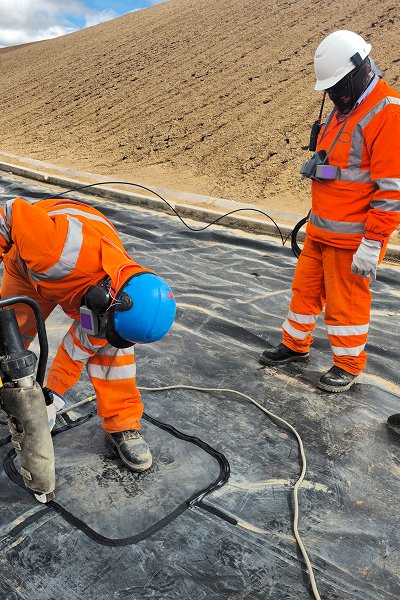Geogrid materials
Polyester (PET): has high tensile strength and excellent anti-aging performance;
Polypropylene (PP): has good corrosion resistance, but low tensile strength;
Polyethylene (PE): has low cost and is suitable for applications under general environmental conditions.
Load-bearing capacity of geogrids
The load-bearing capacity of geogrids is usually determined by their tensile strength and durability. Tensile strength refers to the maximum tensile force that geogrids can withstand when subjected to external forces. Durability involves whether geogrids can resist the effects of corrosion, aging, ultraviolet rays, temperature changes and other factors in the environment during long-term use.

Tensile strength
Tensile strength is one of the most important properties of geogrids, which determines the maximum load that the grid can withstand. In practical applications, the tensile force of geogrids is usually expressed in kN/m. For example, the tensile strength of common uniaxial tension geogrids may be between 20 kN/m and 250 kN/m, while the tensile strength of biaxial tension geogrids is generally between 15 kN/m and 100 kN/m. The tensile strength of composite geogrids will be affected by the composite material, but it is usually also in this range.
Safety factor of geogrid
The safety factor of geogrid is usually determined according to the different use environments. Generally, the safety factor ranges from 1.5 to 3. For example, in the construction of infrastructure such as roads and railways, the long-term stability and reliability of geogrids need to be considered during design, and the appropriate safety factor should be selected to calculate the bearing capacity.
Geogrid Applications
Road and railway reinforcement; roadbed reinforcement. By laying geogrids, the bearing capacity of the roadbed is improved, settlement and deformation are avoided, and the service life of the road is increased. In this application, the bearing capacity of geogrids usually needs to take into account multiple factors such as vehicle load and construction load.
Dyke and slope protection; increase the stability and anti-slip ability of the slope. Geogrids enhance the shear strength of the soil through tensile action and improve the bearing capacity and protection capacity of the dyke.
Mines and landfills; soil reinforcement, foundation treatment and infiltration control. By laying geogrids, the weight of the landfill can be effectively borne while preventing the leakage of harmful substances.

The bearing capacity of geogrid is one of the core indicators of its performance. The material, structure, construction technology and bearing capacity of geogrid will continue to improve and become an important reinforcement material in a wider range of fields. Mastering the bearing capacity of geogrid can not only improve the safety and stability of the project, but also promote the development of civil engineering in a more efficient and environmentally friendly direction.


